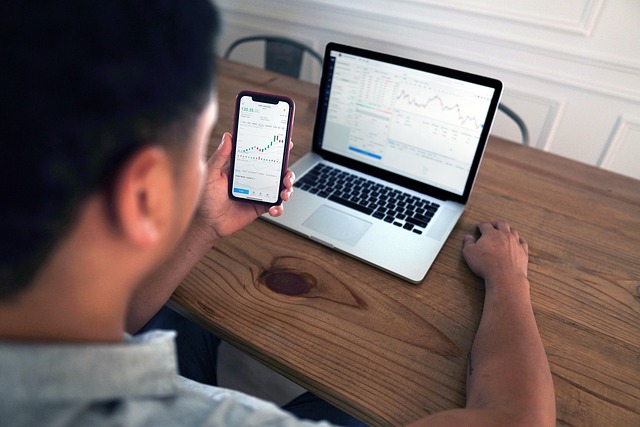Is Trading 212 Good? An In-Depth Analysis for Traders
Author: Jameson Richman Expert
Published On: 2025-08-06
Prepared by Jameson Richman and our team of experts with over a decade of experience in cryptocurrency and digital asset analysis. Learn more about us.
When I first started exploring online trading platforms, I often wondered, is Trading 212 good? This question is common among both beginners and seasoned traders, as the choice of trading platform can significantly impact trading performance, costs, and overall experience. My journey involved testing multiple platforms, scrutinizing their features, security measures, costs, and usability. Through this extensive research and personal experience, I’ve found that Trading 212 is a reputable and user-friendly platform with notable advantages. However, it also has certain limitations that traders should be aware of. This comprehensive review delves into the platform's features, security, costs, user experience, and strategic considerations to help you determine if Trading 212 aligns with your trading goals.

Understanding Trading 212: Key Features and Offerings
Trading 212 is a UK-based financial services provider established in 2004, known for its accessible, intuitive trading platform and transparent fee structure. It offers a broad spectrum of financial instruments, including stocks, ETFs, forex, commodities, indices, and cryptocurrencies. Its primary appeal lies in commission-free trading on stocks and ETFs, which reduces transactional costs—a feature especially attractive to beginner traders, cost-conscious investors, and those building diversified portfolios.
The platform is accessible via web browsers and dedicated mobile apps for iOS and Android, ensuring flexibility for traders on the go. During my testing, I observed that the interface is highly intuitive, designed to be straightforward for users of all experience levels. The availability of a demo account with virtual funds is particularly valuable for practicing strategies without risking real capital, making it ideal for newcomers wanting to understand market mechanics before committing funds.
Trading 212 provides real-time market data, crucial for timely decision-making. Its order execution supports essential order types such as market, limit, and stop orders—suitable for most retail traders. The platform's charting tools are somewhat basic but include key technical analysis indicators like moving averages, RSI, MACD, and Bollinger Bands. Educational resources such as tutorials, webinars, and daily market news are integrated into the platform, making it especially suitable for novice traders seeking continuous learning. Nonetheless, advanced traders might find these features limited and may prefer supplementary tools for deeper analysis.
Security, Regulation, and Investor Protection
Security is a critical factor when selecting a trading platform. Trading 212 is regulated by the Financial Conduct Authority (FCA) in the UK, which provides a significant layer of investor protection. FCA regulation mandates strict compliance standards, including segregation of client funds, regular audits, and capital adequacy requirements—these measures help safeguard traders’ assets and ensure transparency in operations.
In my experience, FCA oversight offers peace of mind, especially amid the proliferation of unregulated brokers in less transparent jurisdictions. Additionally, Trading 212 employs advanced encryption protocols such as SSL/TLS to secure user data and financial transactions. The platform also adheres to the European Union’s MiFID II directive, ensuring transparency and safeguarding investor rights across member states. For traders outside the UK, it’s essential to verify whether Trading 212 operates under similar regulatory frameworks in their jurisdiction to ensure compliance and safety.
Advantages and Disadvantages of Trading 212
Based on extensive research and personal testing, here are the primary pros and cons of Trading 212:
- Pros:
- Commission-Free Trading: No commissions on stocks and ETFs, significantly reducing transaction costs, especially beneficial for frequent traders and long-term investors.
- Intuitive User Interface: The platform’s clean and simple design facilitates easy navigation, making it accessible for beginners and casual investors.
- Risk-Free Practice Environment: The demo account allows users to practice strategies, understand order mechanics, and build confidence without financial risk.
- Regulatory Oversight: FCA regulation enhances trust, safety, and adherence to high operational standards.
- Multiple Account Types: Including Standard, ISA (Individual Savings Account), and CFD accounts, offering flexibility tailored to different investment objectives and risk profiles.
- Cons:
- Limited Research & Analytical Tools: The platform lacks advanced charting, fundamental analysis, and research features available on platforms like MetaTrader 4/5 or TradingView.
- Restricted Order Types: Does not support complex orders such as OCO (One-Cancels-the-Other), trailing stops, or conditional orders, limiting strategic flexibility.
- Customer Support Challenges: Some users report slow response times during high-volatility periods, which can be problematic when rapid decision-making is required.
- Currency Conversion Fees: Additional charges may apply when trading in non-GBP currencies, potentially impacting profit margins for international traders.
- Limited Cryptocurrency Options: While cryptocurrencies are available, the selection and trading conditions are narrower compared to specialized crypto exchanges like Binance or Kraken, and may include higher spreads or less sophisticated trading features.

In-Depth Analysis of Platform Technology and User Experience
The platform’s architecture emphasizes simplicity, speed, and responsiveness. The web interface loads quickly and adapts seamlessly across devices, providing a smooth trading experience. The mobile apps for iOS and Android replicate core functionalities, ensuring consistent usability whether on desktop or mobile. This approach makes trading accessible for beginners but also limits the availability of advanced customization options and tools typically favored by professional traders.
From a technical perspective, Trading 212 employs high-speed servers and optimized coding to minimize latency, which is vital during fast market movements. During my testing, real-time data feeds were generally reliable, though occasional delays were observed during periods of extreme volatility. The charting package offers basic technical indicators and drawing tools but lacks advanced features like multi-timeframe analysis, scripting, or custom indicators—features often essential for experienced traders conducting detailed technical analysis.
My Personal Experience and Key Lessons Learned
Starting with Trading 212, I appreciated its straightforward design, zero commissions, and demo environment—all of which lowered barriers to entry. The platform’s simplicity allowed me to focus on core trading principles and develop disciplined strategies. However, I quickly realized that for more advanced approaches—particularly in volatile markets—its analytical limitations prompted me to seek external tools such as TradingView for detailed technical analysis and Bloomberg for market news.
Expanding my trading ecosystem by exploring other platforms like Binance, MEXC, Bitget, and Bybit through their referral programs provided broader asset options, higher leverage, and more sophisticated trading features. For example, Binance’s referral link here offers benefits such as sign-up bonuses, access to futures, staking, and margin trading. These features enable more strategic flexibility and diversification, complementing the foundational experience on Trading 212.
Is Trading 212 Suitable for All Types of Traders?
Trading 212 is ideal for beginners, casual investors, and those prioritizing low costs and regulatory safety. Its limited analytical tools and order types, however, restrict its suitability for professional or highly active traders executing complex strategies, automation, or hedging. Platforms like MetaTrader 5, NinjaTrader, or crypto-specific exchanges offer advanced features, API integrations, and customization options necessary for such traders.
Conversely, for those learning the ropes and building foundational skills, Trading 212 provides a secure environment, comprehensive educational resources, and a user-friendly interface. It serves as an excellent stepping stone before transitioning to more advanced platforms as skills and trading objectives evolve.

Final Recommendations for Potential Traders
In conclusion, Trading 212 strikes a balance between ease of use, regulation, and low costs, making it especially appealing for beginners and casual investors. Its limitations—such as basic research tools, limited order types, and asset diversity—mean it may not meet the needs of professional traders or those employing complex strategies.
Success with Trading 212 depends on continuous education, disciplined risk management, and incremental skill development. For traders seeking broader asset access, automation, and advanced analytical tools, exploring platforms like Binance, MEXC, Bitget, or Bybit through their referral programs can be advantageous. These platforms often offer a wider range of services, including futures, staking, and margin trading, providing a more comprehensive trading environment.
Always prioritize platform security, regulatory compliance, and start small—using demo accounts to refine skills—before risking significant capital. Long-term success in trading relies on ongoing learning, diversification, and leveraging the right tools tailored to your evolving needs.